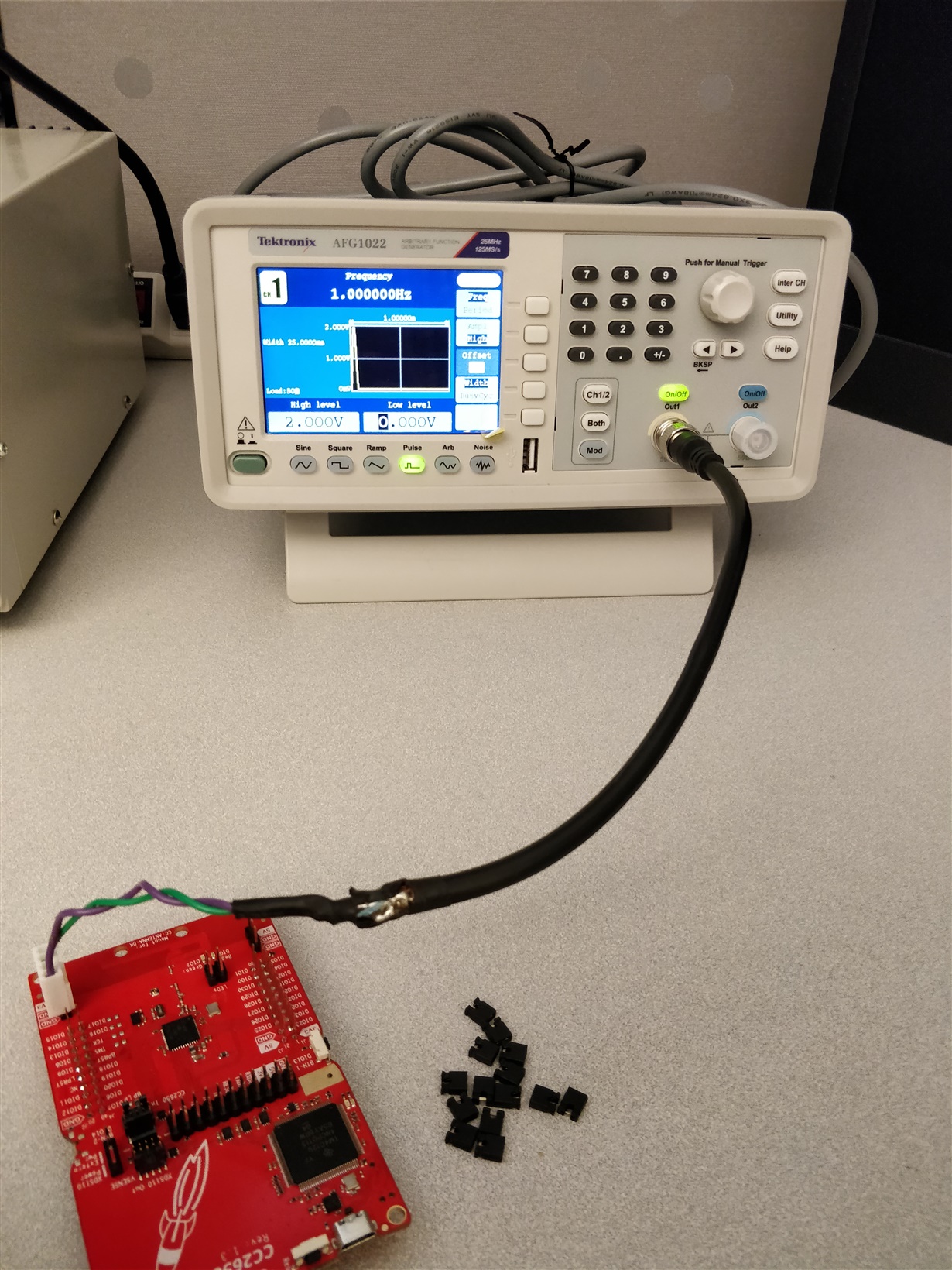Other Parts Discussed in Thread: CC2650, , TIDA-00690
Hello wonderful people on the TI design forum,
I followed the Wireless Switch Power Reference Design to create a custom board. I am able to generate regulated 1.785V from the TPS62122 (DCN-8pin package). Without any load, the pulse lasts for about 2 secs. With the BLE CC2650 launchpad connected, I verified that the pulse lasts about 11 ms, which is similar to reported in the reference manual. However, unlike the reference manual, I am not receiving any BLE broadcast using the CC2650 USB dongle and Packet sniffer. The launchpad is flashed with the stack and application for the Simple BLE broadcast example located in: C:\ti\simplelink\ble_sdk_2_02_01_18\examples\cc2650em\simple_broadcaster. I have removed the jumpers on the launchpad to cut power to the debugger chip, but to no avail.
Using an external supply, I verified that my launchpad sends BLE broadcast if the pulse duration is at least 23 ms. Clearly, the issue is that the pulse generated doesn't last long enough. However, in the TIDA-00690, a 10.8 ms pulse was enough to send the BLE message, so I wonder if there is something missing in my setup that's not covered in the reference design. Do I need to disconnect any jumpers on the launchpad to reduce the power lost to any peripherals? Or, is the CC2650 still in debug mode even though the debugger is not turned on, perhaps a setting in CCS prior to flashing. There is something missing and I hope someone who has worked with this demo can help me find it.
I am a newbie on this platform and I apologize for the simple question. Thanks for your help.
Rahil


